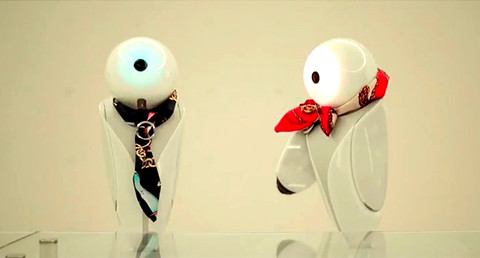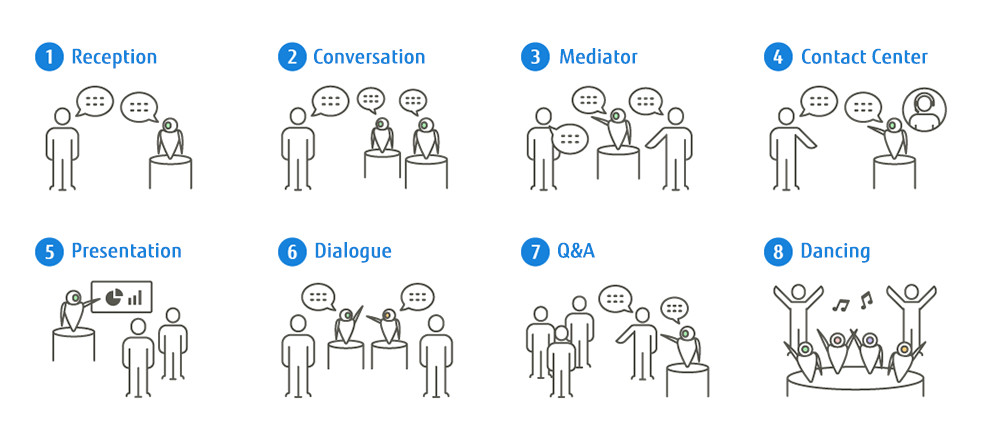Archived content
NOTE: this is an archived page and the content is likely to be out of date.
Drawing closer to people combining robot technology and AI (expressing emotions)
Robots are starting to help make our lives more enjoyable and convenient in everyday situations. To perform customer service duties, it is important for robots to be able to communicate seamlessly and convey information accurately. Fujitsu is working on developing communication robots based on the premise that communication between people and robots is not necessarily "one-on-one." The following is an example of such communication.
Robots Creating a More Effective Form of Communication than One-to-One
Most robots that can talk are developed assuming one-to-one communication. Smartphones and smart speakers also have a conversation function, however, these are also on a one-to-one basis.
However, human communication is not limited to one-to-one conversation. We sometimes experience cases in which misunderstandings that occur in one-to-one conversation are resolved with the help of an intermediary. The same happens in communication between humans and robots.
Robots will play a role that will exceed merely providing information through various communication styles. From the viewpoint of promoting seamless communication, Fujitsu feels that robots can play an effective role in communication as a mediator (intermediary).
Robot-Human Communication Mediated by Another Robot
Imagine a situation where two robots are at the reception desk of a company. When a visitor comes to the reception desk to see someone who is not registered as an employee, a robot says, "The person is not here." If the visitor gets confused, the other robot then follows up and says, "I think the person is probably...," thereby providing appropriate guidance to the visitor without offending them.
 When a robot is communicating with a person, the other robot mediates the communication.
When a robot is communicating with a person, the other robot mediates the communication.
During one-to-one conversations between a person and a robot, if the person does not really understand what the robot is talking about because of insufficient or inappropriate explanation, even if the same robot adds further explanation, it is difficult to change the person's view that "this robot's explanation is hard to understand." At such a time, if the other robot gives a helping hand, extracting complementary information from the flow of conversation with the person, they can guide the person in the right direction for reaching a solution.
Robots Playing an Active Role in Reception, Guidance and Creating a Pleasant Atmosphere
Robots can also serve as mediators in contexts other than conversations. For example, suppose robots are placed at several points in an event venue, while support staff members are waiting at the contact center. A visitor who needs assistance asks a robot a question. If it is a simple question, the robot can answer by itself. However, if the question is complicated, the robot can access the contact center and a staff member at the contact center can answer the question through the robot.
Robots can also collaborate with electronic bulletin (digital signage) boards in towns and event venues. If a robot is placed beside an electronic bulletin board displaying information, it can explain the displayed information with gestures and voices in a way that is easy for viewers to understand.
Assisting presentations while exchanging conversation with the presenter, performing dance demonstrations standing side-by-side and creating a pleasant atmosphere in the place are also important communication services that robots provide.
 Communication model examples by robots
Communication model examples by robots
Expanding the Potential of Robots by Integrating with AI and IoT
In order to use robots successfully, it is vital to leverage advanced technologies, such as information analysis with AI, IoT, and Big Data. Robopin is therefore designed for use with ICT technologies, including FUJITSU Human Centric AI Zinrai.
Fujitsu will continue researching robot technology and promoting the evolution of communication by improving interaction and collaboration among robots and in other ways to deliver the value of the latest technologies to society.